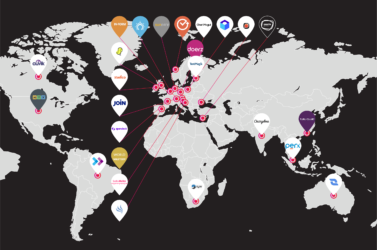With SaaS products, the user experience is everything. Poor user experiences can make customers abandon your product and go to your competitors. On the other hand, great user experiences will keep users engaged with your products and services no matter what. Here are 9 ways to improve your SaaS product’s user experience:
Simplify Navigation
Users should be able to easily find what they are looking for without having to spend too much time searching or navigating through complex menus. By streamlining your navigation menu and grouping related items together, you can make your product more intuitive and user-friendly. This can help reduce frustration and increase engagement among users, ultimately leading to higher satisfaction and retention rates. By prioritizing navigation in your sustainable web design, you can create a seamless and enjoyable experience for users that will keep them coming back for more.
Key takeaway: Make it easy for users to find what they need by simplifying your navigation menu and grouping related items together.
Streamline Onboarding Processes
With streamlined onboarding, you can help new users get up to speed quickly and start using your product with confidence. Onboarding processes that are too long or complex can be off-putting for users, so it is important to strike the right balance between providing enough information and keeping things concise. Additionally, consider using tools such as tutorials, FAQs, or videos to help users learn about your product and get the most out of it. By simplifying and optimizing your onboarding process, you can provide a great user experience that sets new users up for success.
Key takeaway: Create an onboarding process that is easy to follow and provides clear guidance on how to use your product.
Provide Helpful Resources
Users appreciate having access to a variety of resources that can help them use your product more effectively and troubleshoot any issues they may encounter. Consider creating a knowledge base or help center. You might also consider offering live chat support or email support to provide users with direct assistance when they need it. By providing helpful resources, you can empower users to take control of their experience with your product and ensure that they get the most out of it.
Key takeaway: Offer resources such as tutorials, FAQs, and videos to help users get the most out of your product.
Use Clear Language
Users should be able to understand what your product does and how it can benefit them without needing to decipher complex technical jargon or buzzwords. Use plain language that is easy to understand, and avoid using acronyms or industry-specific terms that may be unfamiliar to users. Ensure that your product’s interface is intuitive and easy to navigate, with clear labels and instructions for each feature. By using clear language, you can create a more welcoming and accessible user experience that encourages users to explore your product further.
Key takeaway: Avoid jargon and technical terms that may confuse users. Use simple, clear language that is easy to understand.
Optimize Performance
Users expect your product to be fast, reliable, and responsive, so it’s essential to ensure that it meets those expectations. Start by conducting regular performance tests to identify any bottlenecks or areas for improvement. You may need to optimize your code, reduce file sizes, or make other adjustments to improve load times and overall performance. Additionally, consider implementing caching or other techniques to reduce server load and speed up data retrieval. You might want to get in touch with IT support companies like Mustard IT to streamline this kind of process.
Key takeaway: Ensure that your product performs well and loads quickly to avoid frustrating delays or downtime.
Personalize User Experience
Users want to feel like your product is tailored to their individual needs and preferences, so it’s essential to offer customization options wherever possible. This could include allowing users to adjust settings or choose from different themes, or providing personalized recommendations based on their usage patterns. You could also consider using data analytics tools to track user behavior and provide targeted content or features that align with their interests. By personalizing the user experience, you can create a stronger connection between users and your product, increasing engagement and loyalty over time.
Key takeaway: Customize the user experience based on each user’s preferences, behavior, and history with your product.
Offer Mobile Optimization
With more and more users accessing websites and applications from their mobile devices, it’s essential to ensure that your product is optimized for smaller screens and touch-based navigation. This could include using responsive design techniques to ensure that your product looks great on any device, or developing a dedicated mobile app that offers a streamlined and intuitive interface. Consider optimizing load times and reducing data usage to ensure that your product performs well on slower mobile networks. By offering mobile optimization, you can make your product more accessible to users on the go, increasing engagement and satisfaction with your brand.
Key takeaway: Make sure your product is optimized for mobile devices so users can access it from anywhere at any time.
Implement Feedback Mechanisms
Users want to feel heard and valued, so it’s essential to provide them with a way to share their thoughts and opinions on your product. This could include implementing a feedback form or survey within your application, or providing users with a dedicated email address or forum where they can submit their ideas and suggestions. It’s also essential to respond promptly and thoughtfully to user feedback, addressing any issues or concerns that arise and incorporating user suggestions into future updates whenever possible. By implementing feedback mechanisms, you can show your users that you care about their experience and are committed to making continuous improvements to your product. You can also use influencer marketing. 31% of experts revealed that influencer content captures the attention of social media users.
Key takeaway: Allow users to provide feedback easily and frequently so you can continually improve their experience with your product.
Provide Excellent Customer Service
When users encounter issues or have questions about your product, they want to be able to get help quickly and easily. This could include offering live chat support, providing a dedicated phone number or email address for customer inquiries, or developing a comprehensive knowledge base that answers common questions and provides helpful resources. It’s important to respond promptly and professionally to all customer inquiries, addressing their concerns and working to resolve any issues as quickly as possible.
One way to enhance your customer service offerings is by partnering with industry leaders like Infassure, which specializes in healthcare security systems, ensuring a seamless and secure experience for your clients.
Key takeaway: Respond quickly and effectively to customer inquiries, complaints, or issues to build trust and loyalty among users.




